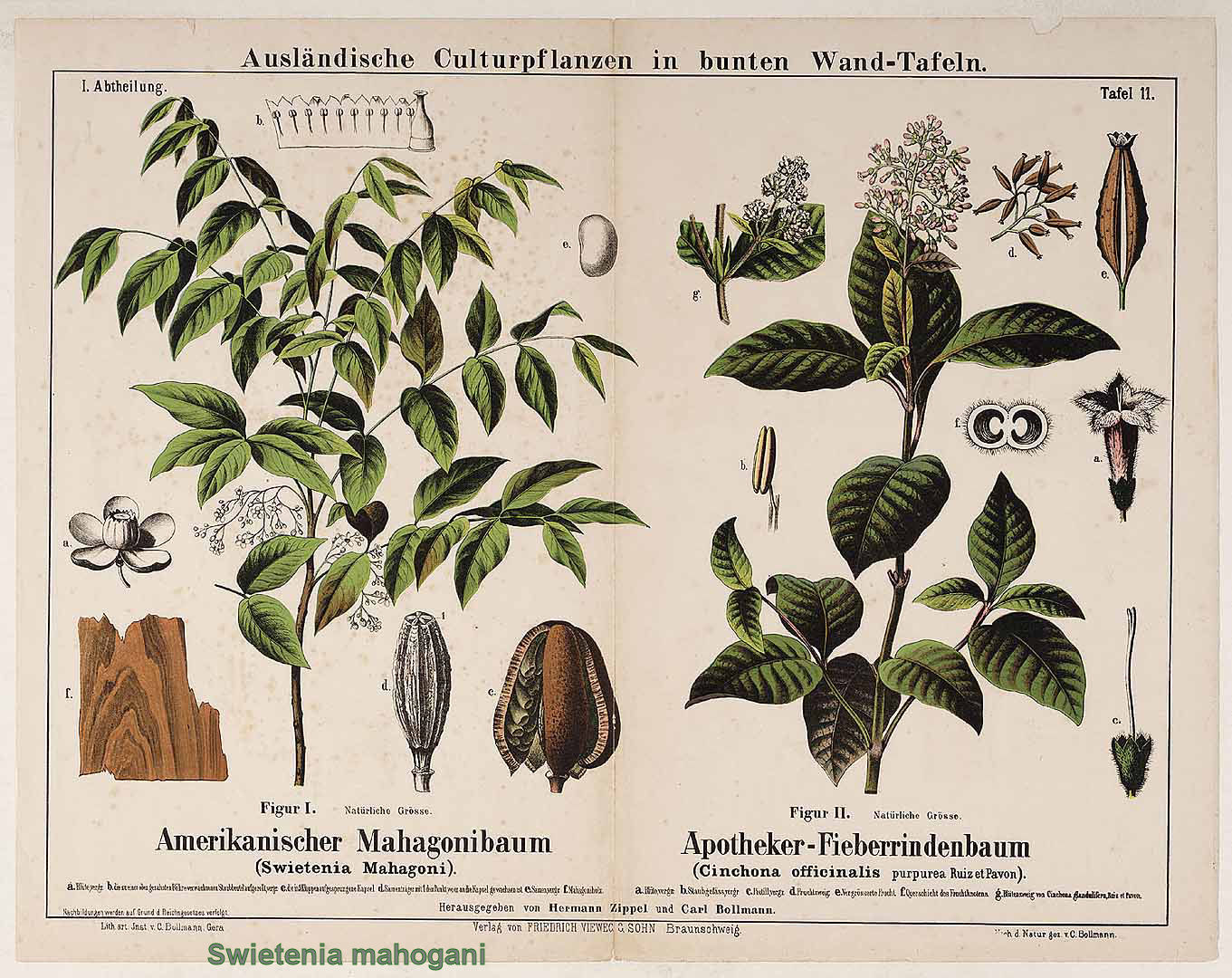Swietenia Mahogani and Macrophylla
 Synonym
Synonym
Cedrus mahogani, Swietenia fabrilis, Swietenia mahogany, Swietenia mahogoni.
Common name
Mahogany, West Indian Mahogany, Spanish mahogany, Madeira redwood, acajou, caoba,
caoba de Santo, cheria mahogany, Cuban mahogany, American mahogany, True mahogany, small leaf mahogany, Dominican
mahogany.
Family
Meliaceae (Mahogany family).
Overview
Mahogany is an upright growing tree, up to 150 feet tall in
Suriname; it has a broad rounded symmetrical crown. The leaves are pinnately compound, ovate-lanceolate; the small,
fragrant unisexual flowers are rather inconspicuous. The fruit is a large (4-6") greenish-brown woody capsule, splitting into 5
parts releasing the flat, long winged, light-brown seeds.
Mahogany is among the most valued timber species in South America. The dense wood is renowned for its beautifully
close grained, hard red-brown wood.
Used for furniture, fixtures, musical instruments, inlay, boats, caskets, airplanes, foundry patterns, veneer.
This tree is not indigenous to Suriname, (it is native to southern Florida, Bahamas, Cuba, Jamaica, St.
Croix, Virgin Islands and Hispaniola) but was imported in the early 19th century as an ornamental tree.
Closely related to the West Indian Mahogany is the Swietenia Macrophylla; common names:
Honduras Mahogany, South American Mahogany or Aruputanga Moegno.
The difference is in the leaves; those of the Honduras Mahogany are bigger (but not as leathery) than
that of the West Indian Mahogany.
Also, the flowers are different and the fruit is bigger and more
pear-shaped.
The wood of the West Indian Mahogany is more expensive although both are rare these days since they are
now considered commercially extinct throughout much of their ranges.
S. Macrophylla is also a faster growing species.
Other related species are: Honduran or Pacific Coast mahogany (Swietenia humilis) and Venezuelan mahogany (Swietenia
candollei).
Medicinal applications
Mahogany has potent antimicrobial activity on a number of microorganisms, pathogenic microorganisms
included. The phytochemicals present in this plant are responsible for the antimicrobial activity.
The areal parts and seeds are used against anemia, depurative, diarrhea, dysentery, fever, and malaria.
Bark extracts may be used as an astringent for wounds.
The leaves contain several limonoids; seven phragmalin limonoids of swietephragmins A-G as well two other different types of
2-hydroxy-3-O-tigloylswietenolide and deacetylsecomahoganin.
The seeds contain flavonoid, saponin and alkaloids.
Landscape uses
Used as an avenue tree, spaced 25 - 45" apart.
Hardiness
USDA zone: 9A - 11 (they will probably grow no higher than 70' in the sub - tropics).
They will shed leaves if temperatures drop below 36ºF.
Propagation
Seeds (from private property in South America).
Culture
Full sun / partial shade. Plant in frost-free locations, water periodically.
Tolerant of acidic to alkaline soils.
Occasional pruning of branches is needed to keep a straight
trunk.
|

